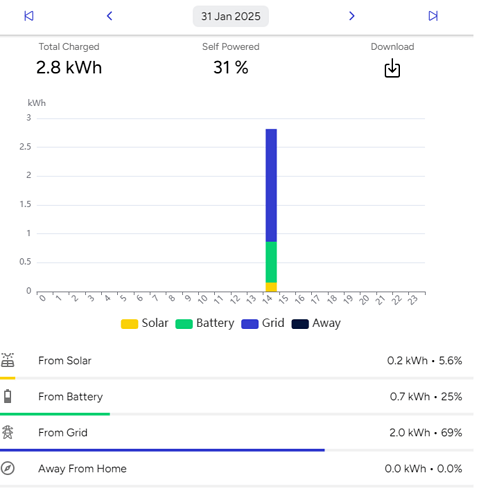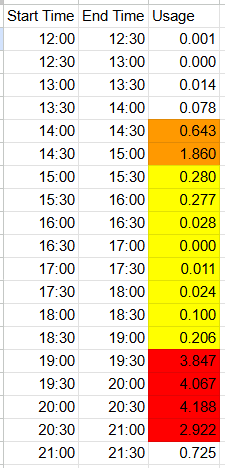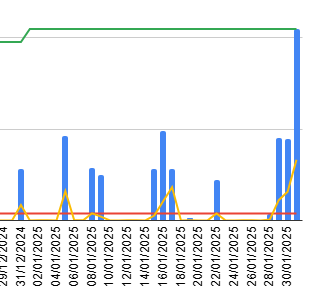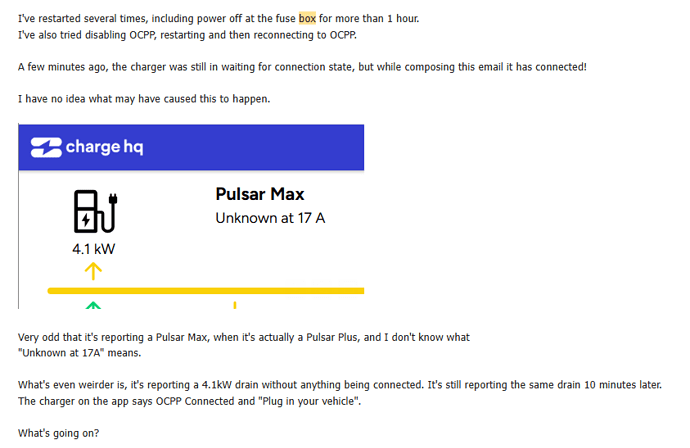For anyone else who finds themselves here…
I tried disconnecting OCPP, rebooting the Wallbox, deleting the charger from ChargeHQ and reconnecting to see if it would fix the incorrect name. It didn’t, so the next option is the “reset”. I was assurred the “authorised installer” warning only applies to a “hard reset”, which involves opening the physical box, so “nothing to worry about”.
I’ve now done a reset on the Wallbox PulsarPlus.
A few “gotcha’s”
After the reset the app wouldn’t reconnect. “Connection failed, try restarting”.
To get back in I cleared both the cache and data from the phone. I was then able to reconnect and configure WiFi.
The app said there was a software update, but I needed to connect by WiFi to request it. The phone wouldn’t connect by WiFi. I was able to connect from a PC via the web page and request the update. Strangely, the reported “up to date” version I was running was v.6.1.19 (updated in Jan 2024), but the new update is v.5.17.18 which looks lower to me.
Again, I reconnected to ChargeHQ via OCPP. After all that, the charger is still incorrectly labelled as “Pulsar Max”. I asked Wallbox support about the version number, and the incorrect label. They said:
“You’re right to be concerned about the software version appearing lower after the update. It’s possible that the previous version was withdrawn due to unforeseen issues. We understand this can be confusing, and we appreciate you bringing it to our attention.”
Odd. If that were the case I’d have expected the “withdrawn” version number to have been flagged on the original problem description.
About the label, they’re pointing the finger back at ChargeHQ
“Regarding the ChargeHQ issue, we can confirm that your charger is indeed a Pulsar Plus. The discrepancy in their system is likely an issue on their end, and unfortunately, we don’t have direct control over how they identify and display devices. We recommend contacting their support team directly to report this inaccuracy. They should be able to rectify it on their platform.
While the ChargeHQ misidentification might be frustrating, it shouldn’t affect the functionality of your charger. The important thing is that the charger itself is working correctly and communicating with our system.”
Should I report the misidentification as a separate case?
Thanks for your attention.
Oh, one other thing (another case?) what are the chances of getting some kind of notification from ChargeHQ when/if the OCPP connection is lost? Have I missed a setting?





